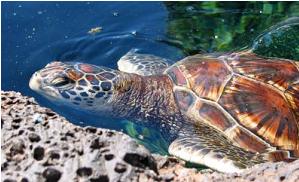The Guinea Bissau 2008 project started as usual immediately after our return from our previous XT2C activity from Ouagadougou. We kept targetting a semi-rare African location North of the equator as propagation on the higher bands will probably be worse in early 2008. The latest "most wanted" survey from DX magazine showed a fair interest for J5, particularily in Asia and western part of North America.
e-mail

Team building was performed quite quickly among the friends who participated in previous activities. Some last minute professional constraints forced a few members to drop-off and keeping a fair balance between SSB/CW/Digimode operators was a little tricky. We will finally be a group of 16 operators.
Our operating site is on Bubaque Island (Bijagos Archipelago) some 70km away from the capital city Bissau.
It is located 11°17' N / 15°50' W in locator IK21BG
Bubaque Island is IOTA AF-020 and WLOTA 1146
Our operating site is on Bubaque Island (Bijagos Archipelago) some 70km away from the capital city Bissau.
It is located 11°17' N / 15°50' W in locator IK21BG
Bubaque Island is IOTA AF-020 and WLOTA 1146
From a timing standpoint, we wanted to take full benefit of the bottom of the solar cycle cycle to optimize low bands traffic. Therefore we chose January. This is also a fair choice from a climate standpoint.

The Bijagós Archipelago are a group of some eighteen major islands and dozens more smaller ones in the Atlantic Ocean. They are a part of Guinea-Bissau. In pre-colonial times the islands were central to the trade along the coast of West Africa and they built up a powerful navy. In 1535 this enabled them to rout the Portuguese when they attempted to conquer the islands. The islands were not taken by Portugal until 1936.
Today, only twenty of the islands are inhabited and the others have only small populations of the Bijagós people. The southern islands are today a nature reserve. The islands of Bubaque, Bolama, and Caravela are the most populated and are visited by tourists. This continued even during the years of unrest in Guinea-Bissau as the islands remained isolated from those events.
They constitute a UNESCO Biosphere Reserve, known for animals including marine turtles and monkeys and are mostly forested. The population mostly speaks Bijagó and has a considerable degree of autonomy.
Source www.wikipedia.org
They constitute a UNESCO Biosphere Reserve, known for animals including marine turtles and monkeys and are mostly forested. The population mostly speaks Bijagó and has a considerable degree of autonomy.
Source www.wikipedia.org



